Retro Replay Review
Gameplay
At its core, Taipan delivers a compelling buy-low, sell-high trading loop that feels both accessible and strategically deep. You begin in 19th-century Hong Kong with a modest ship and a handful of trading options—general goods, arms, silks, and eventually the high-risk, high-reward opium trade. Each port visit presents a new set of prices, encouraging you to scout the map, time your voyages, and decide when to risk it all on more lucrative but dangerous cargo.
Tension underpins every transaction. On any given voyage, you may encounter pirates on the high seas who will demand money or cargo at gunpoint. Back in port, pickpockets can lighten your purse, thieves can breach your warehouse, and Li Yuen’s local mafia will demand protection payments that grow more extortionate each time you dock. These random events introduce enough volatility to keep your heart racing: a profitable anchor lift can quickly turn into a desperate scramble to pay off extortion or recoup lost goods.
Progression in Taipan hinges on reinvesting your profits into ship upgrades and armaments. As you accumulate wealth, larger vessels become available—offering more cargo space but drawing jealous pirate attention and steeper repair bills after every skirmish. Deciding whether to pour cash into heavier cannon or a bigger hold forces you to balance offensive firepower with economic ambition.
Finally, the open-ended nature of the simulation fuels replayability. There’s no fixed end date, and you can choose to retire once you hit one million in cash—at which point the game tallies your net worth, ship size, and other achievements. Whether you aim for a quick fortune via silk speculation or plot a long game smuggling opium, Taipan gives you the tools to craft your own mercantile legend.
Graphics
While Taipan doesn’t rely on cutting-edge visuals, its retro-styled graphics perfectly evoke the spirit of early ’80s trading sims. The minimalist interface makes it easy to scan price lists, check your ship’s condition, and respond to random events without wading through menus. Icons representing ships, piers, and ports are clear and functional, ensuring you spend more time plotting strategies than deciphering needlessly complex UI elements.
Color palettes lean toward muted earth tones—browns for warehouses, deep blues for the ocean, and dusky reds for warning dialogs—conjuring a period atmosphere that places you squarely in the 1800s Far East. The simplicity of the animations (sailing ships, cannon volleys, and dockside exchanges) feels nostalgic, yet it never detracts from the core gameplay loop.
Sound design is limited but effective: creaking ship decks, distant cannon fire, and ambient harbor chatter lend an immersive audio backdrop. Alerts for pirate encounters and Li Yuen’s ultimatums come with chimes that cut through the harbor noise, ensuring you never miss a critical event. The understated soundtrack, if you can call it that, serves more to set a mood than to sensationalize, keeping the focus squarely on your next trade decision.
Overall, the graphics and audio work in harmony to deliver a period-appropriate aesthetic. You’re not here for blockbuster visuals—you’re here for high seas drama and lucrative commerce—and Taipan’s presentation supports that ambition admirably.
Story
Although Taipan is primarily a trading simulation, it is loosely framed around James Clavell’s eponymous novel. You step into the shoes of an ambitious merchant in 1800s Hong Kong, forging your path in a world of cutthroat competition, shady alliances, and shifting loyalties. The narrative is emergent: each purchase, extortion demand, and narrow escape from capture weaves into your personal merchant saga.
Key characters appear more as archetypes than fully fleshed-out personalities. Li Yuen, the local mafia boss, chiefly serves to ramp up pressure on your enterprise, demanding ever-increasing “protection” fees. Pirates and port authorities play their roles as antagonists, turning every sea voyage into a gamble. While you won’t find lengthy cutscenes or dialogue trees, the context of each transaction—legal goods versus contraband—imbues your choices with moral weight.
The arc of your story emerges organically from gameplay. Do you chase honest profit, trading general goods and silks? Or will you flirt with the illicit opium trade to accelerate your rise to wealth? Each decision alters the risk profile of subsequent voyages: authorities might target you more aggressively if they suspect opium aboard, and pirates may be emboldened by rumors of your riches.
By offering a sandbox narrative rather than a linear plot, Taipan empowers you to shape your own mercantile legend. The lack of rigid story beats may feel casual, but for fans of open-ended simulations, it unlocks a rewarding blend of historical pulp drama and player-driven adventure.
Overall Experience
Taipan is a classic trading simulation that balances straightforward mechanics with enough randomness to keep each playthrough fresh. Its learning curve is gentle: you’ll quickly grasp the basic principle of buy-low, sell-high, yet you’ll find ample room to experiment with opium smuggling, naval combat, and warehouse management as you chase greater riches.
The game’s pacing invites both quick sessions—swooping in for a single profitable run—and marathon campaigns where you methodically build your fortune over dozens of voyages. Paired with the open-ended retirement goal of one million in cash, Taipan fits a range of playstyles, from the casual trader to the committed mercantile strategist.
Though it lacks flashy graphics and a scripted storyline, Taipan’s strength lies in its emergent gameplay and period charm. Random events like pirate raids, extortion demands, and market fluctuations keep you on your toes, ensuring no two voyages feel identical. The simple UI and memorable audio cues further enhance immersion without overcomplicating the experience.
For anyone intrigued by economic simulations or historical trading adventures, Taipan offers a richly textured experience that remains surprisingly engaging decades after its original concept. Whether you’re drawn to its high‐stakes opium trade or prefer safer silk and arms runs, this game delivers a satisfying blend of risk, reward, and strategic depth that will keep you plotting new routes long into the night.
 Retro Replay Retro Replay gaming reviews, news, emulation, geek stuff and more!
Retro Replay Retro Replay gaming reviews, news, emulation, geek stuff and more!
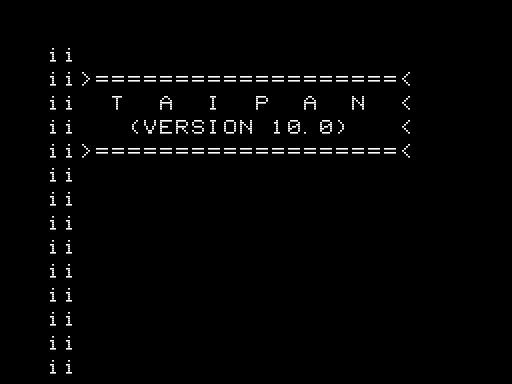
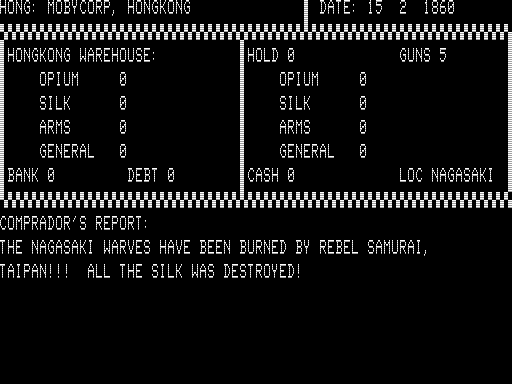
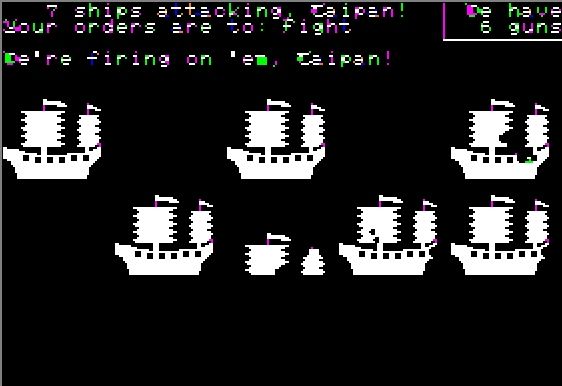
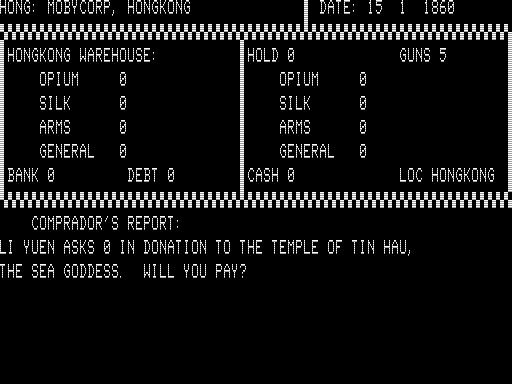
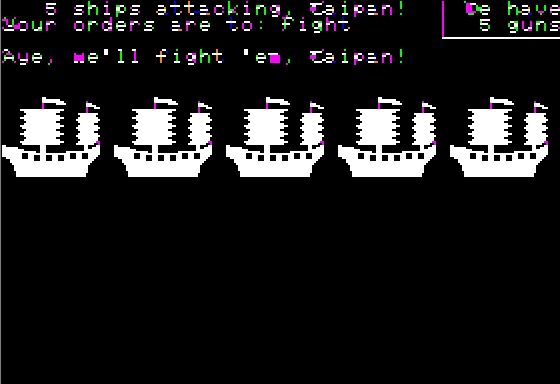
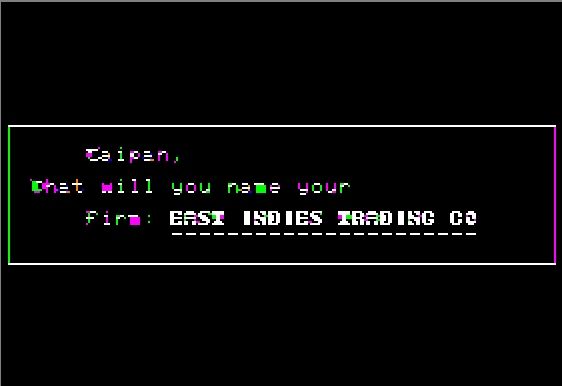


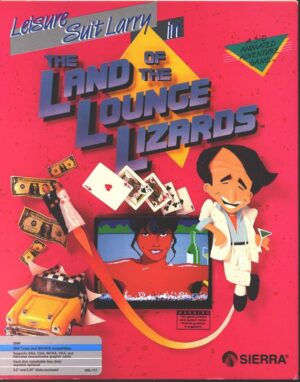
Reviews
There are no reviews yet.